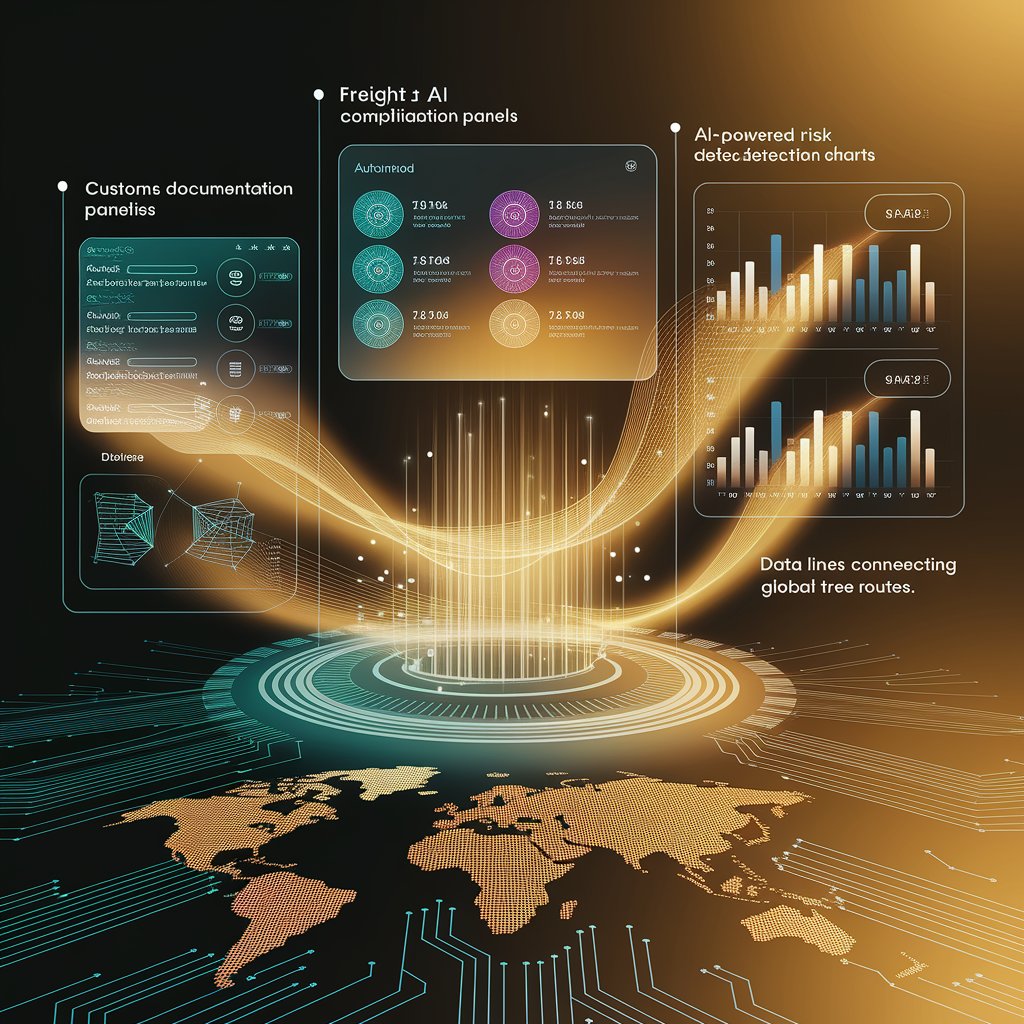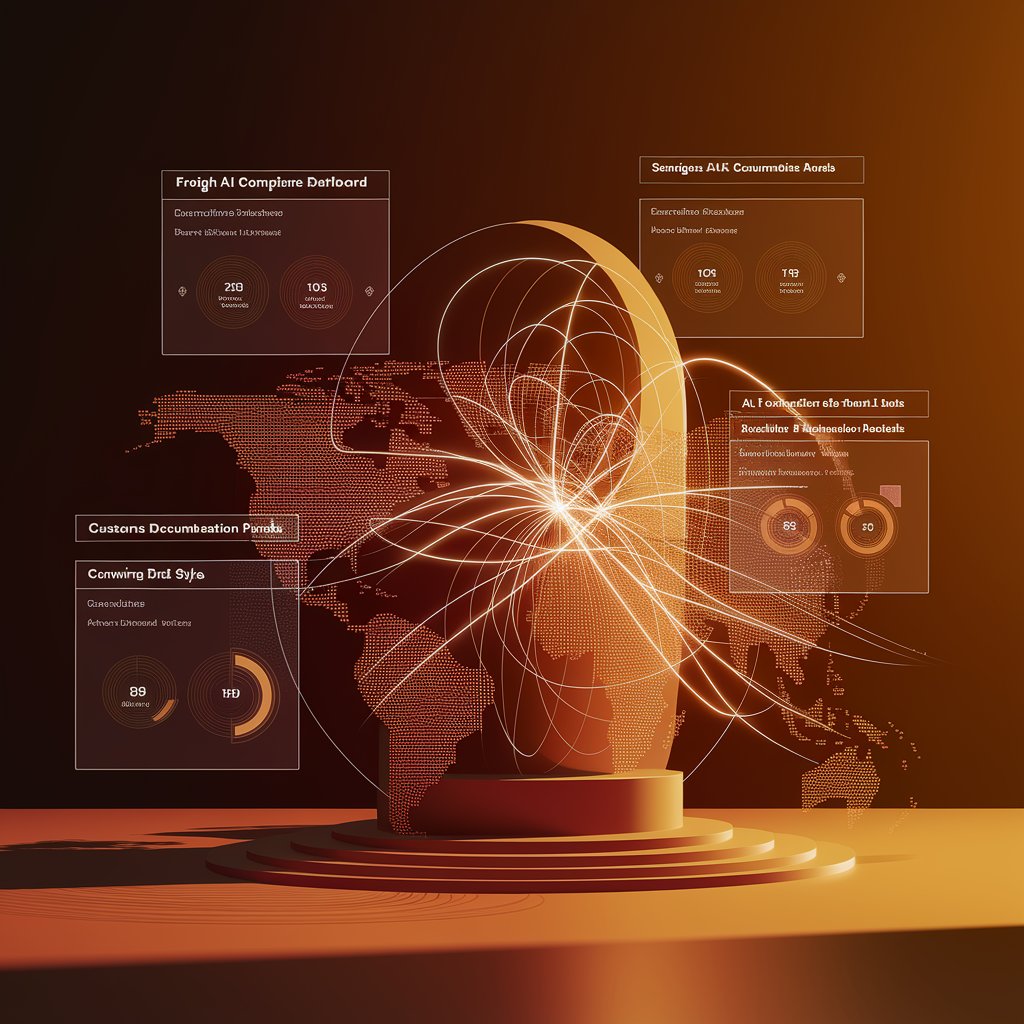Freight AI Compliance Software: Smarter Risk Management for Global Trade

Introduction
This is where freight AI compliance software comes into play. By combining artificial intelligence with automation, these platforms allow logistics providers, carriers, and shippers to stay ahead of regulations, reduce risks, and streamline compliance workflows.
What Is Freight AI Compliance Software?
Freight AI compliance software is a digital solution that uses artificial intelligence to automate and optimize compliance processes in logistics. These platforms integrate with ERP, TMS, WMS, and customs systems to:
- Screen shipments against global trade regulations.
- Automate customs documentation.
- Monitor sanctions and restricted party lists.
- Detect potential compliance risks before they cause disruptions.
The result: faster, more reliable compliance and reduced exposure to financial or reputational risks.

Key Features of Freight AI Compliance Software
- Automated Documentation – Generate and validate customs forms instantly.
- Sanctions & Trade Screening – AI cross-checks shippers, carriers, and consignees against restricted lists.
- Real-Time Regulation Updates – Stay compliant with evolving global trade laws.
- Risk Detection Engines – Flag anomalies in cargo, routes, or partners.
- Integration with ERP/TMS – Seamless connection with existing logistics platforms.
- Compliance Dashboards – Centralized visibility for auditors and managers.
Benefits of Freight AI Compliance Software
- Risk Reduction – Identify compliance issues before they escalate.
- Efficiency Gains – Eliminate manual checks and reduce errors.
- Cost Savings – Avoid fines, delays, and shipment rejections.
- Faster Customs Clearance – Accelerate global trade flows.
- Transparency – Provide clear audit trails for regulators and partners.
- Resilience – Adapt quickly to shifting regulatory landscapes.

Real-World Applications
- Freight Forwarders – Automate compliance checks across clients and shipments.
- Carriers – Ensure compliance with cross-border transport regulations.
- E-commerce Logistics – Manage high volumes of shipments with automated customs clearance.
- Cold Chain Providers – Ensure compliance for pharmaceutical and perishable goods.
- Global Shippers – Track compliance across multiple jurisdictions simultaneously.
Challenges in Freight AI Compliance Software
- Integration with Legacy Systems – ERP and customs platforms may resist adoption.
- Data Accuracy – Poor or incomplete shipment data reduces AI effectiveness.
- Cybersecurity Risks – Sensitive compliance and trade data must be protected.
- High Initial Investment – AI-driven compliance systems require upfront costs.
- Change Management – Teams may resist shifting from manual compliance methods.

Best Practices for Success
- Start with High-Risk Trade Lanes – Apply AI compliance where regulations are strictest.
- Unify Data Sources – Standardize shipment and partner data for accuracy.
- Leverage Predictive Insights – Anticipate risks before they occur.
- Invest in Cybersecurity – Protect sensitive compliance data from threats.
- Train Teams & Partners – Build confidence in AI-driven compliance tools.
- Track ROI – Measure savings from reduced fines, faster clearances, and lower overhead.
The Future of Freight AI Compliance Software
- Blockchain Integration – Secure, tamper-proof compliance records.
- Autonomous Compliance Engines – Self-learning systems adapting to new laws instantly.
- Digital Twins for Trade – Simulating compliance risks before execution.
- AI-Enhanced Auditing – Real-time verification of transactions and cargo.
- Sustainability Compliance – Tracking emissions and ESG reporting requirements.
Conclusion
Freight AI compliance software is transforming how logistics companies manage regulatory risks. By automating compliance processes, reducing errors, and ensuring real-time alignment with trade regulations, AI-driven platforms protect businesses while streamlining operations.
For freight forwarders, carriers, and global shippers, adopting isn’t just about avoiding fines—it’s about building smarter, safer, and more resilient logistics networks.
